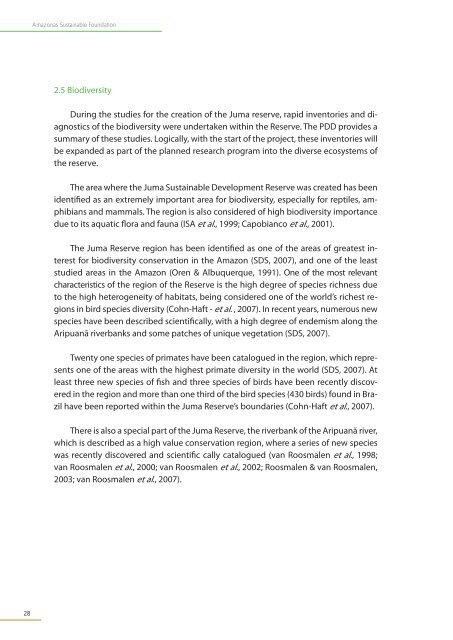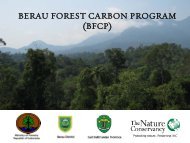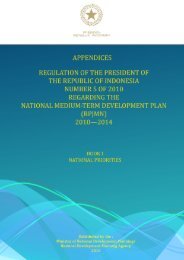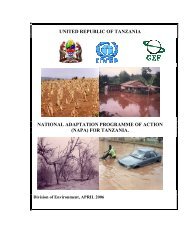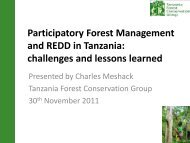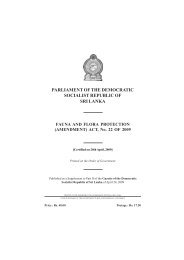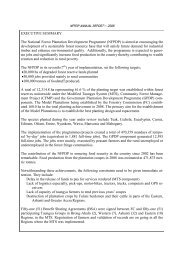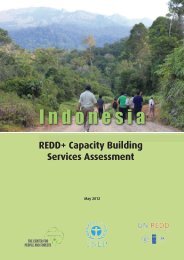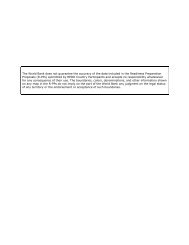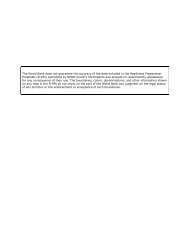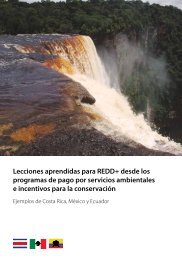Juma Sustainable Development Reserve: The ... - The REDD Desk
Juma Sustainable Development Reserve: The ... - The REDD Desk
Juma Sustainable Development Reserve: The ... - The REDD Desk
Create successful ePaper yourself
Turn your PDF publications into a flip-book with our unique Google optimized e-Paper software.
28<br />
Amazonas <strong>Sustainable</strong> Foundation<br />
2.5 Biodiversity<br />
During the studies for the creation of the <strong>Juma</strong> reserve, rapid inventories and diagnostics<br />
of the biodiversity were undertaken within the <strong>Reserve</strong>. <strong>The</strong> PDD provides a<br />
summary of these studies. Logically, with the start of the project, these inventories will<br />
be expanded as part of the planned research program into the diverse ecosystems of<br />
the reserve.<br />
<strong>The</strong> area where the <strong>Juma</strong> <strong>Sustainable</strong> <strong>Development</strong> <strong>Reserve</strong> was created has been<br />
identifi ed as an extremely important area for biodiversity, especially for reptiles, amphibians<br />
and mammals. <strong>The</strong> region is also considered of high biodiversity importance<br />
due to its aquatic fl ora and fauna (ISA et al., 1999; Capobianco et al., 2001).<br />
<strong>The</strong> <strong>Juma</strong> <strong>Reserve</strong> region has been identifi ed as one of the areas of greatest interest<br />
for biodiversity conservation in the Amazon (SDS, 2007), and one of the least<br />
studied areas in the Amazon (Oren & Albuquerque, 1991). One of the most relevant<br />
characteristics of the region of the <strong>Reserve</strong> is the high degree of species richness due<br />
to the high heterogeneity of habitats, being considered one of the world’s richest regions<br />
in bird species diversity (Cohn-Haft - et al. , 2007). In recent years, numerous new<br />
species have been described scientifi cally, with a high degree of endemism along the<br />
Aripuanã riverbanks and some patches of unique vegetation (SDS, 2007).<br />
Twenty one species of primates have been catalogued in the region, which represents<br />
one of the areas with the highest primate diversity in the world (SDS, 2007). At<br />
least three new species of fi sh and three species of birds have been recently discovered<br />
in the region and more than one third of the bird species (430 birds) found in Brazil<br />
have been reported within the <strong>Juma</strong> <strong>Reserve</strong>’s boundaries (Cohn-Haft et al., 2007).<br />
<strong>The</strong>re is also a special part of the <strong>Juma</strong> <strong>Reserve</strong>, the riverbank of the Aripuanã river,<br />
which is described as a high value conservation region, where a series of new species<br />
was recently discovered and scientifi c cally catalogued (van Roosmalen et al., 1998;<br />
van Roosmalen et al., 2000; van Roosmalen et al., 2002; Roosmalen & van Roosmalen,<br />
2003; van Roosmalen et al., 2007).


